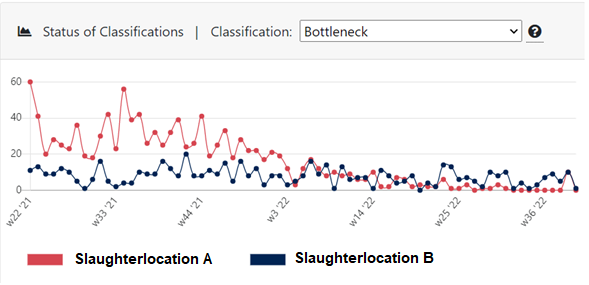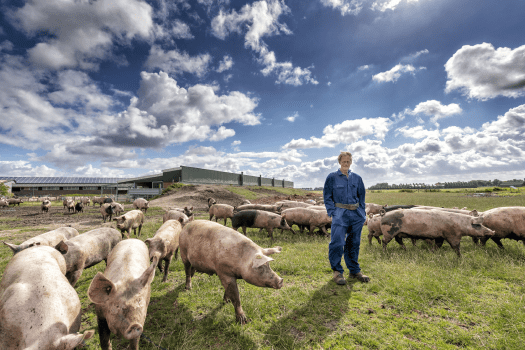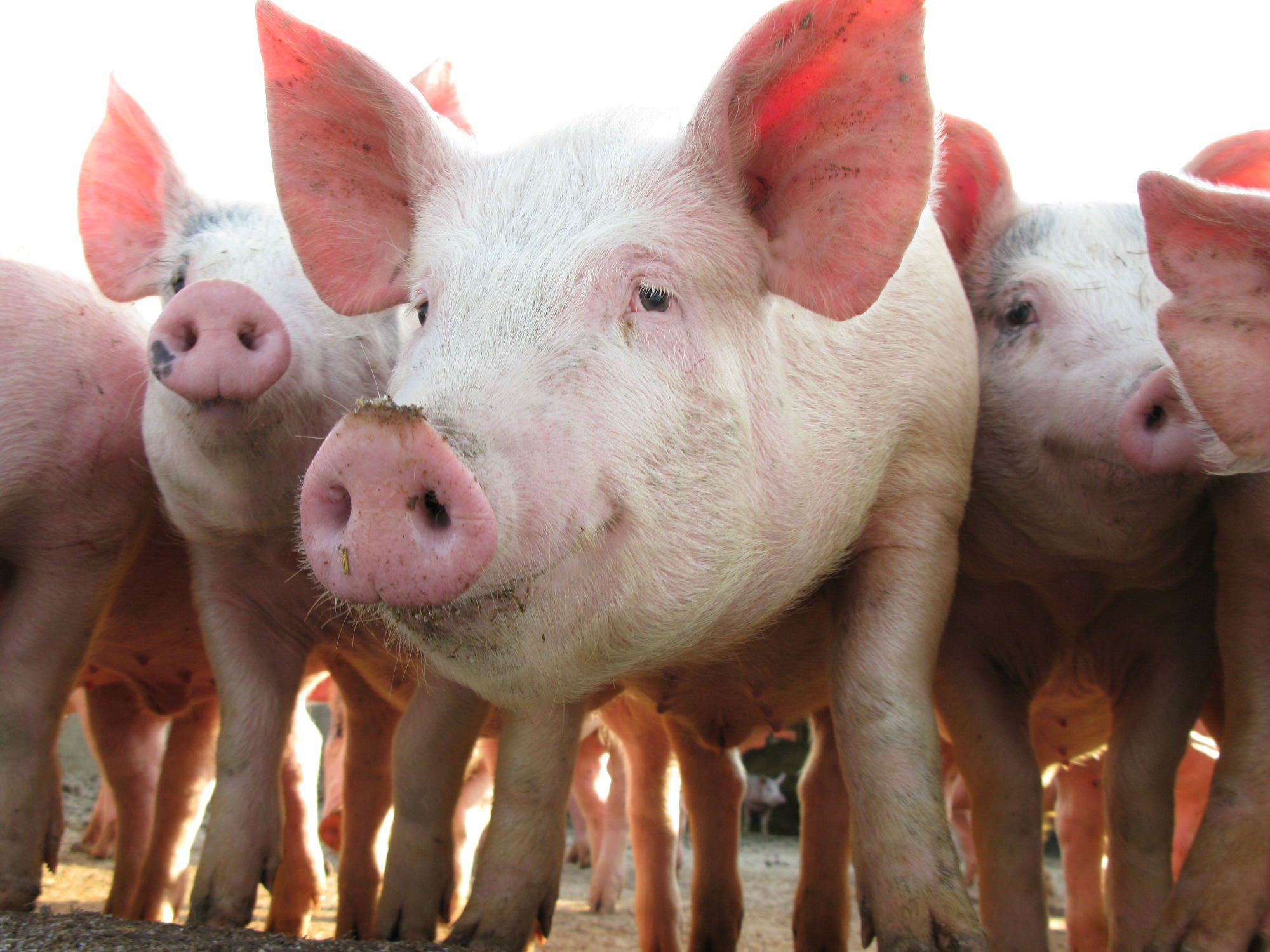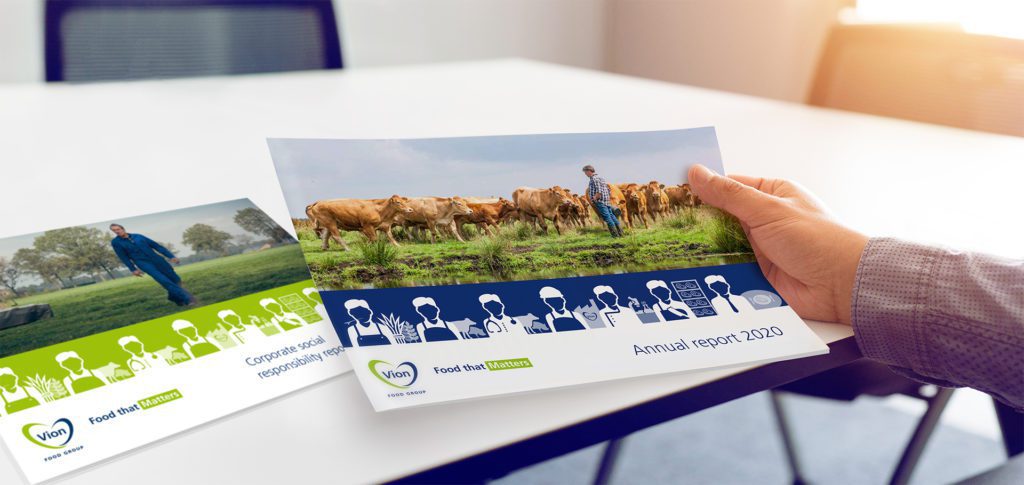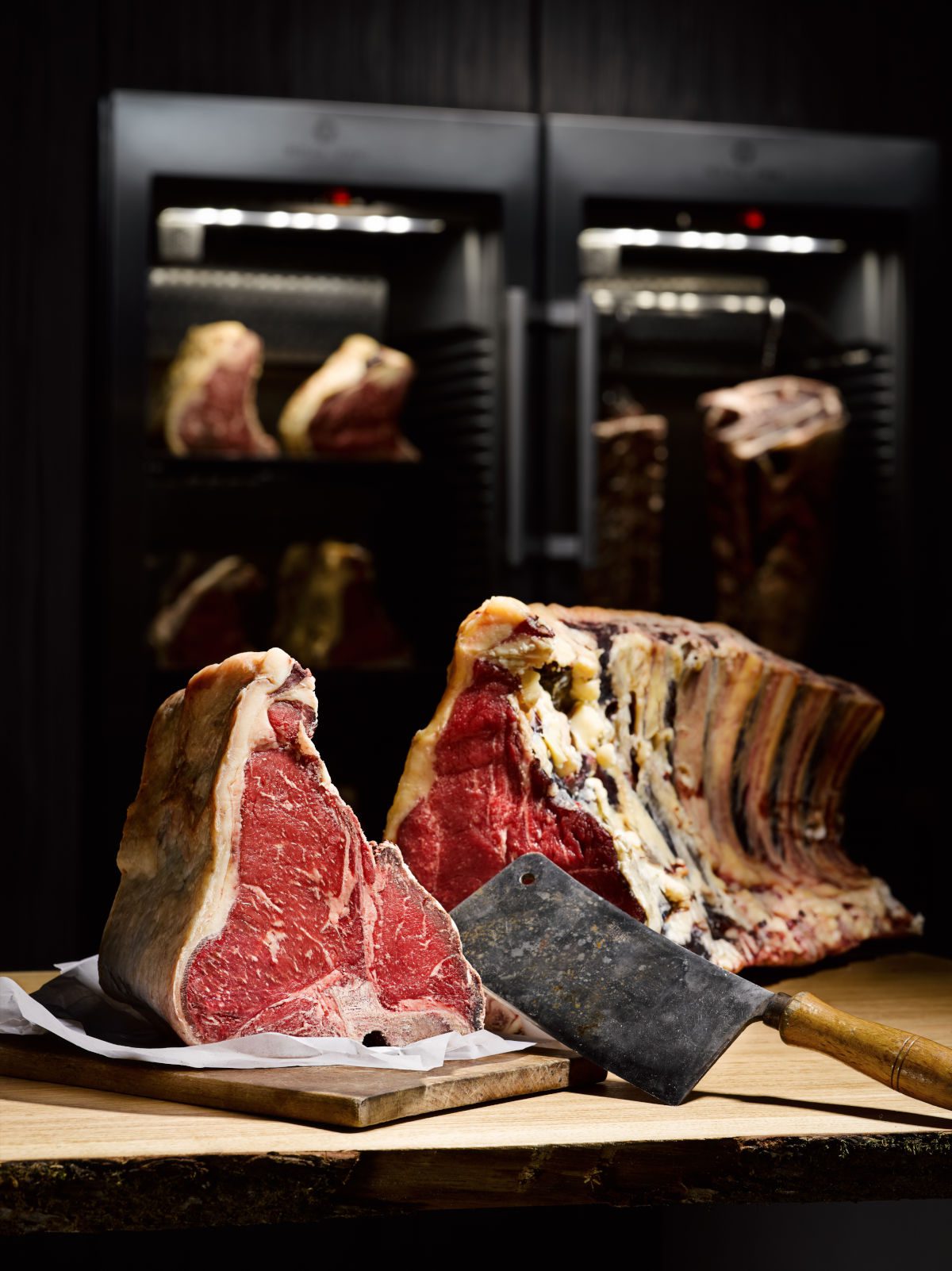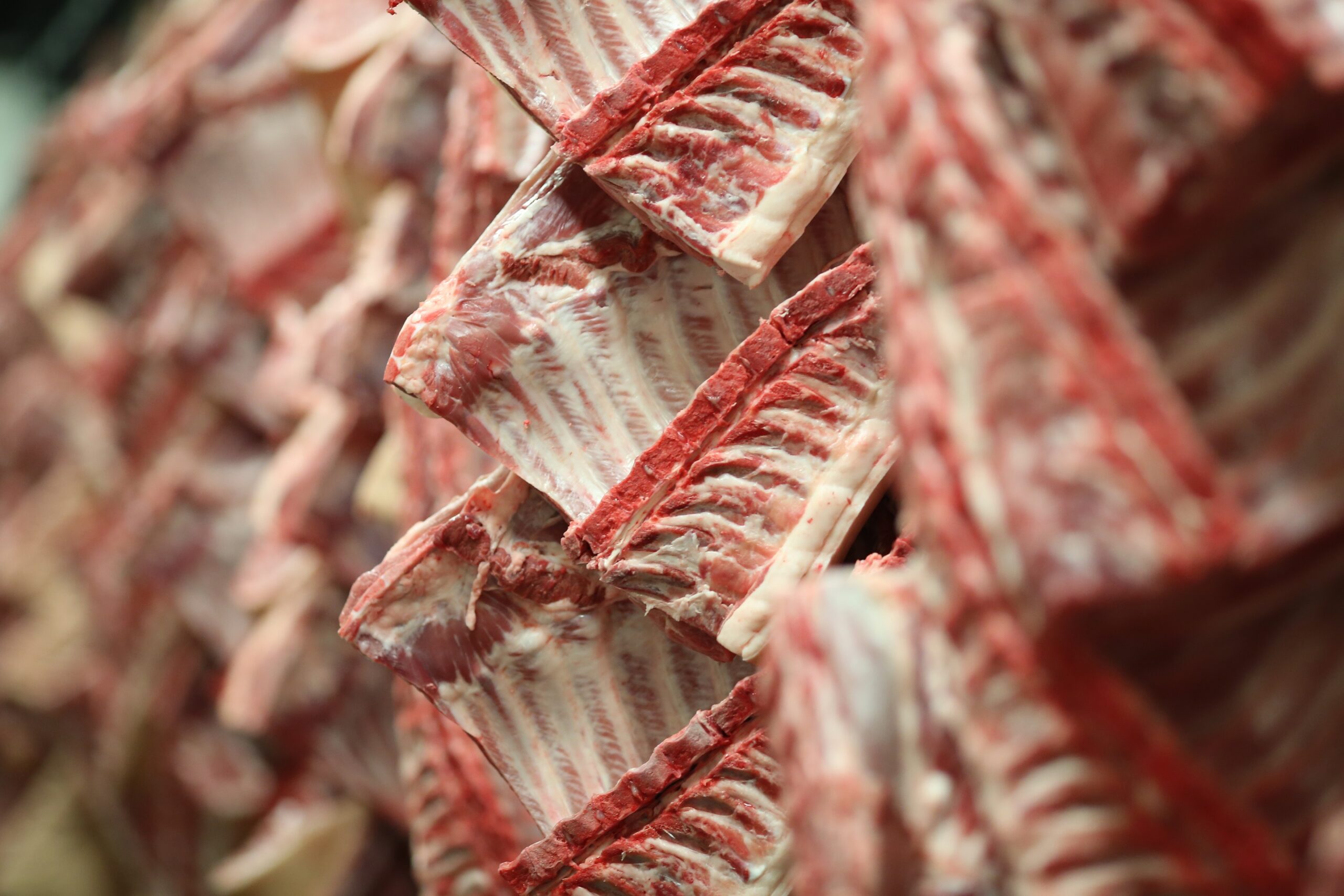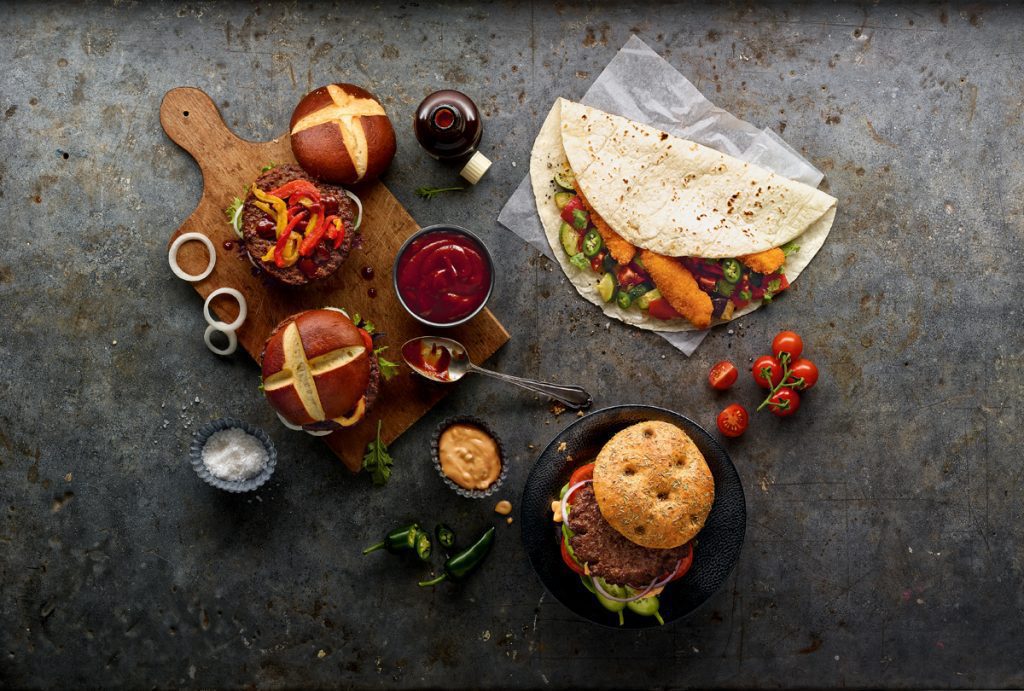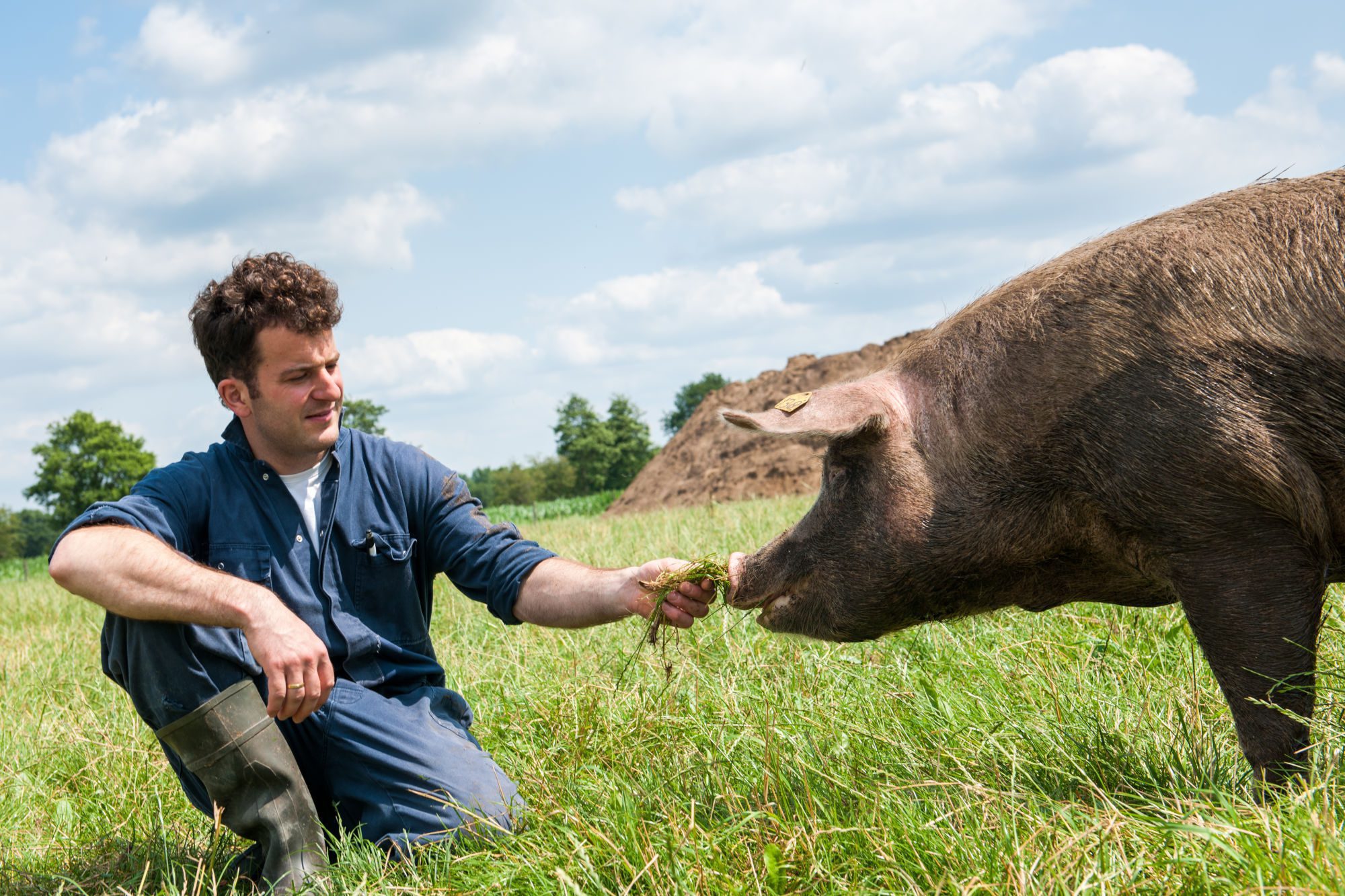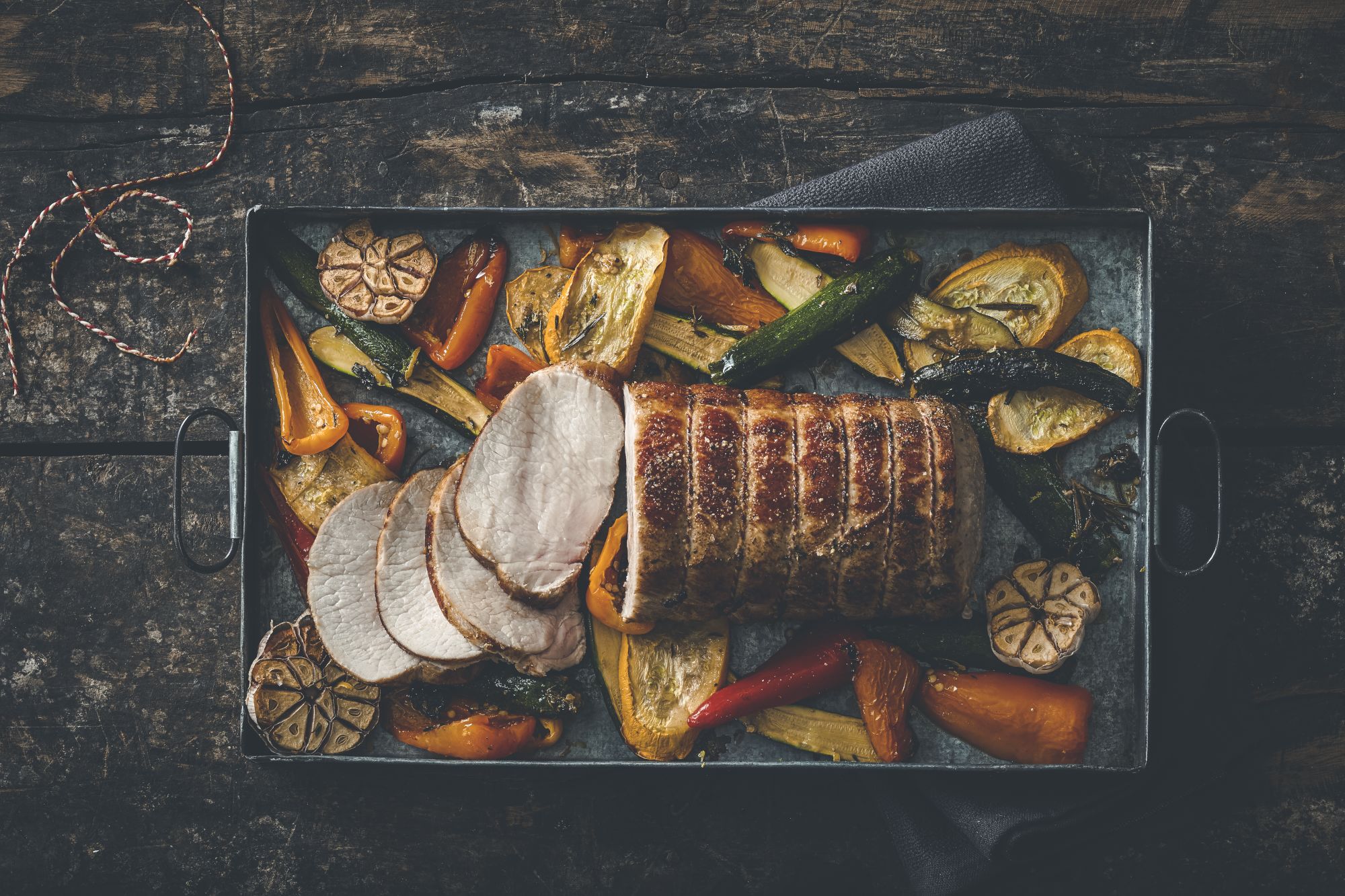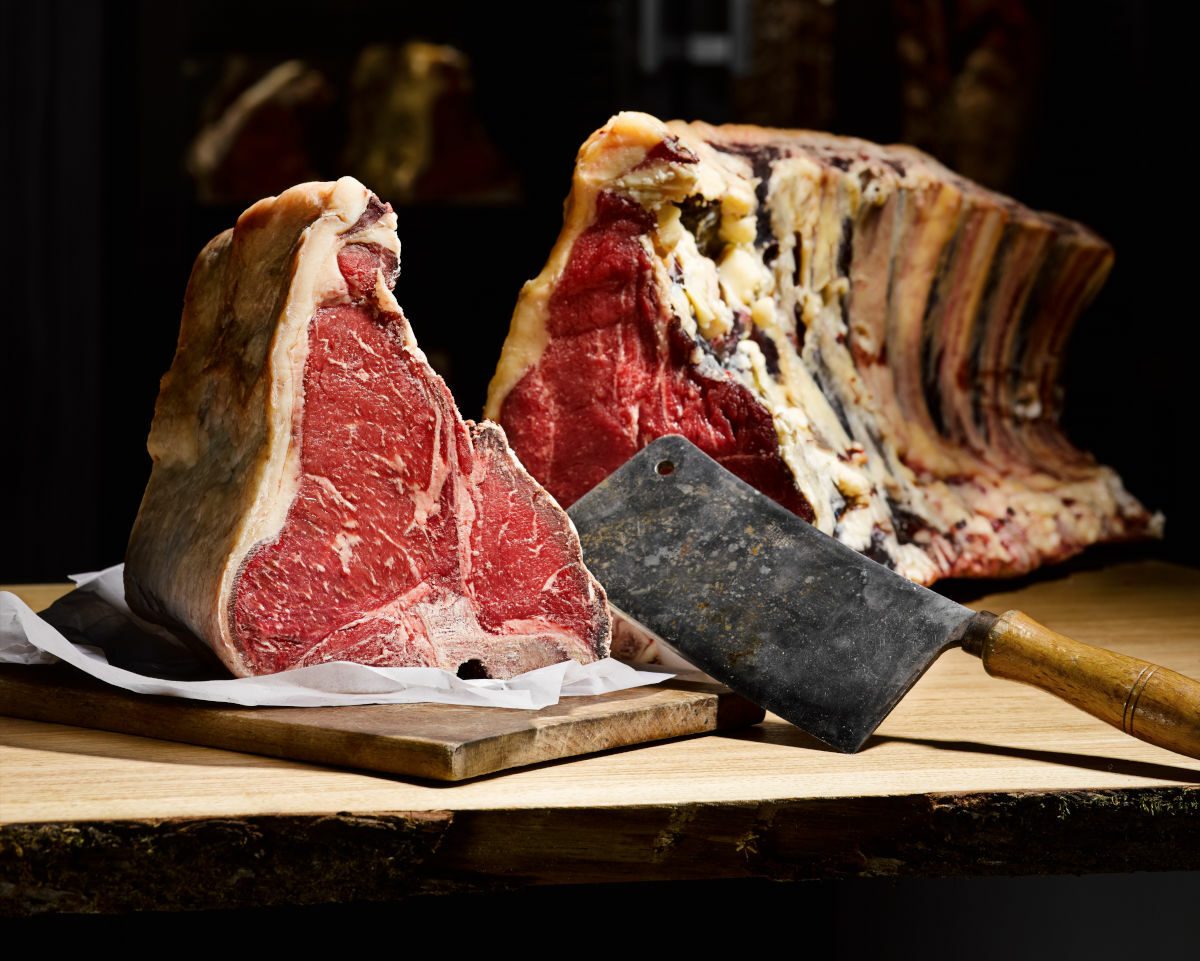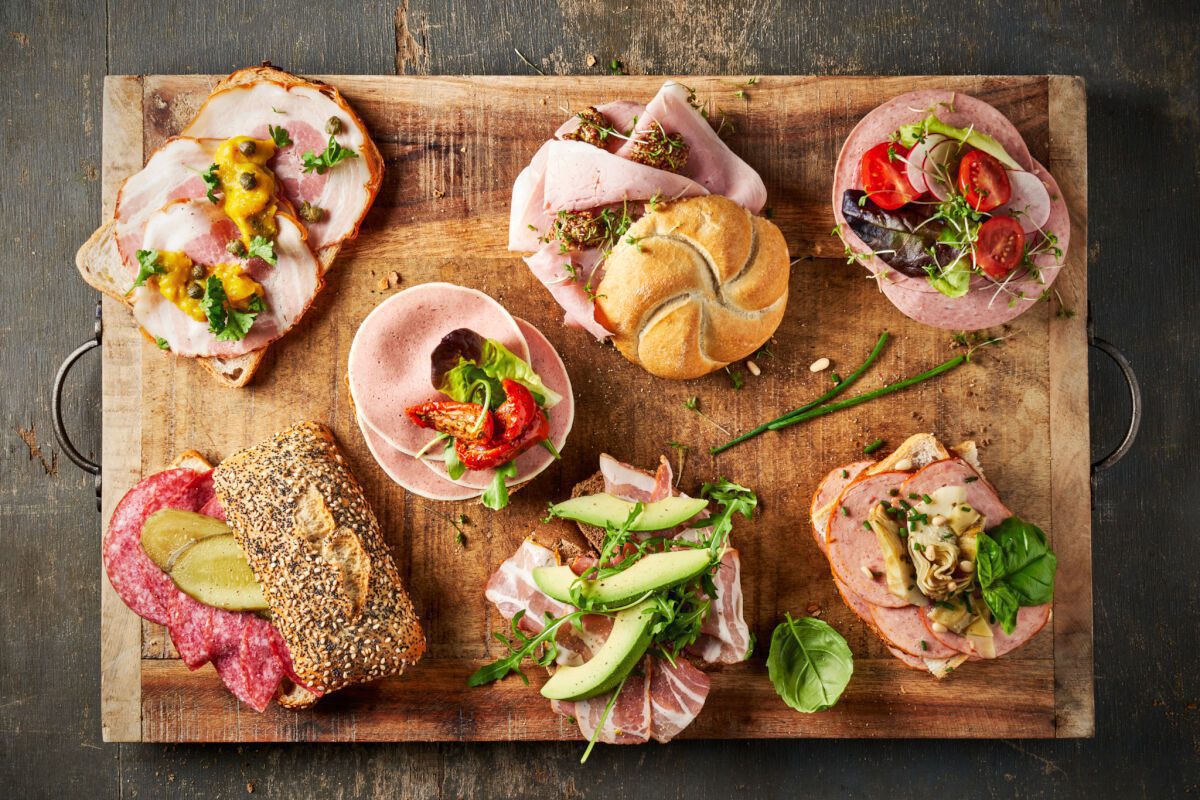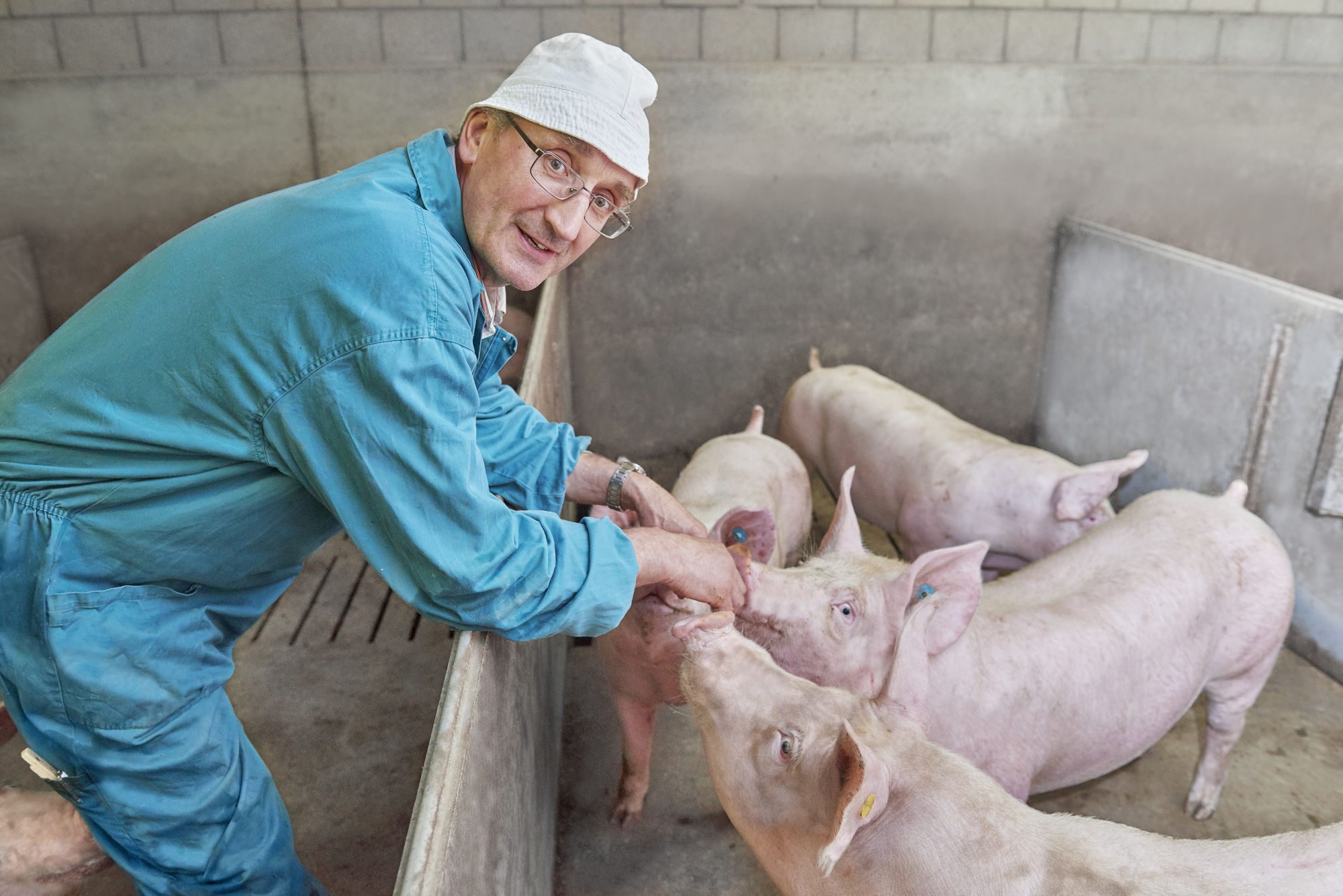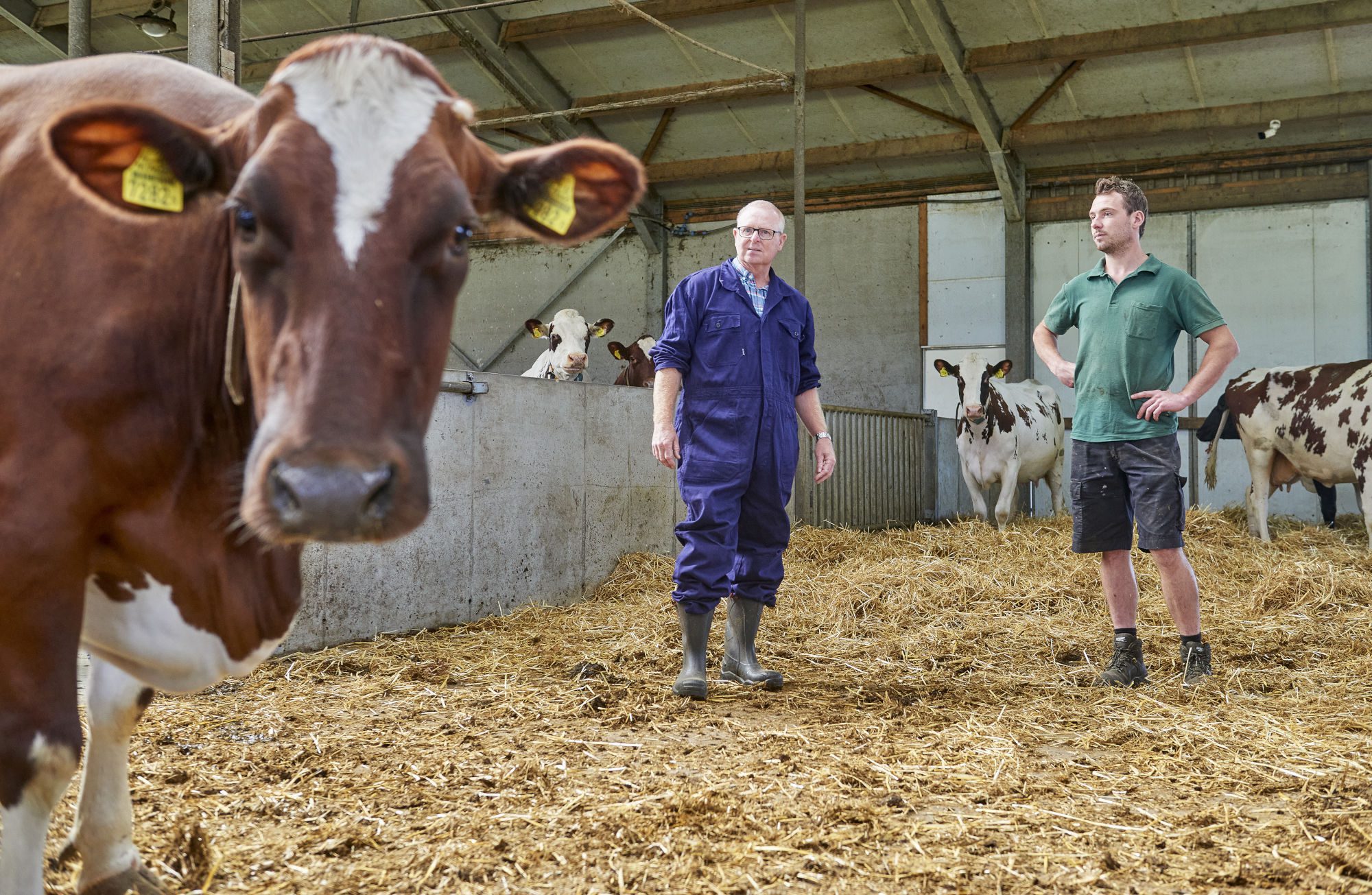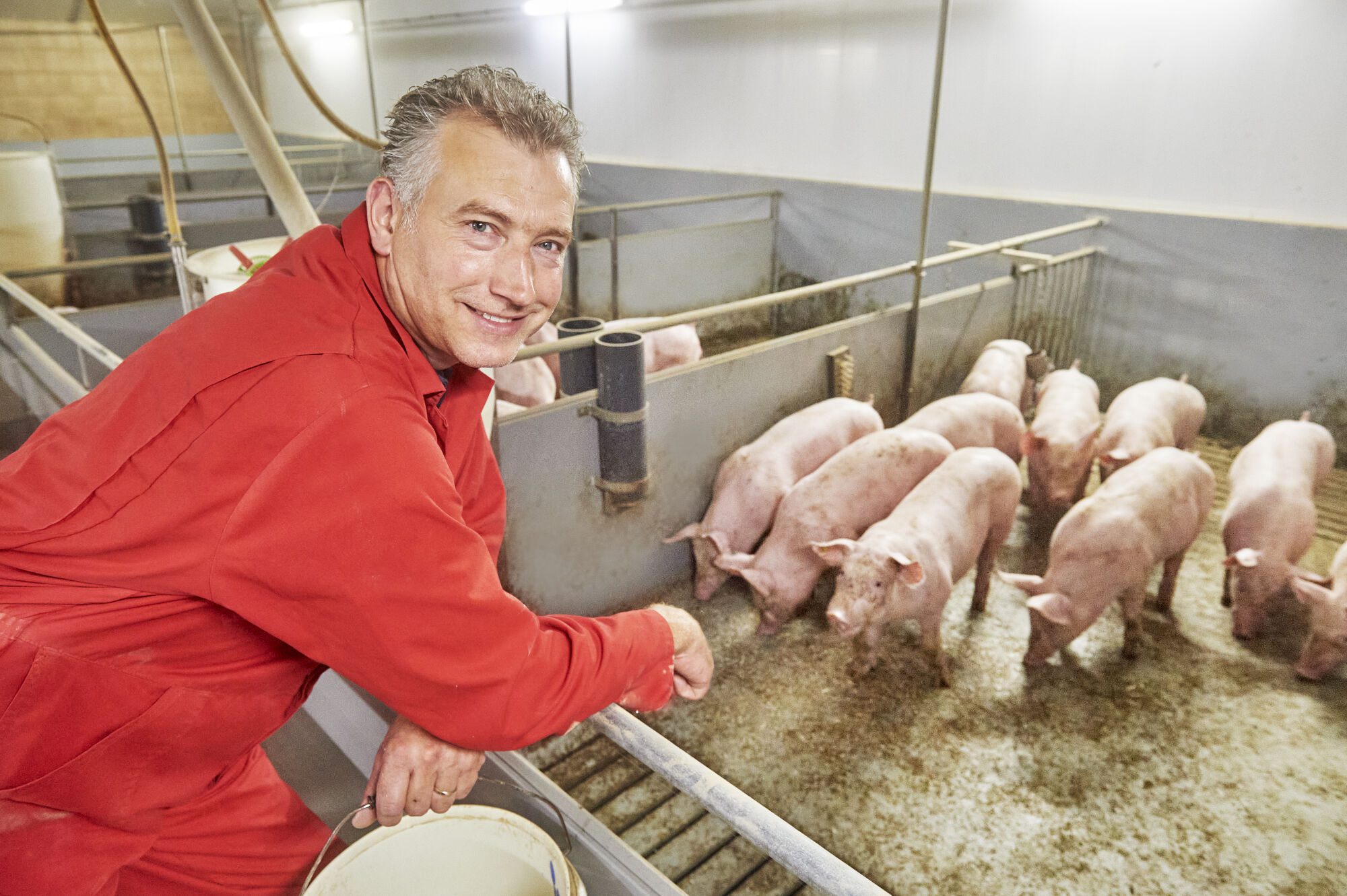Artificial intelligence camera monitoring for improving animal welfare
Animal welfare control and transparency are key themes in the Vion strategy. One of our control methods within this theme is smart camera monitoring.
Together with consulting firm Deloitte, Eyes on Animals and the Dutch Society for the Protection of Animals, Vion has co created a new monitoring tool to improve animal welfare: using artificial intelligence (AI) to monitor human and animal interaction at the unloading area and lairage in our slaughterhouses.
This newly developed software, has given the slaughterhouses an objective animal welfare assessment tool. A new standard for all animal slaughterhouses is developed and contributes to the continuous improvement of animal welfare.
Cameras are recording continuously, 100% of the recorded footage is analyzed by the software. Situations with potential animal welfare deviations are selected and this selected footage is loaded in a dashboard. Daily, the selected footage is reviewed by the trained Animal Welfare Officer.
With this smart camera monitoring, there is an objective and continuous evaluation of animal welfare. This helps to compare and to improve in an effective way.
Cameras are recording continuously, 100% of the recorded footage is analysed by the software
Background
The major slaughterhouses have been implementing camera surveillance (CCTV) for several years. Cameras record continuously in all areas with animals, resulting in hundreds of hours of footage every week. However, only a small, random selection of footage is viewed by the Animal Welfare Officer. This way of working results in a reasonable possibility that animal welfare issues could be missed.
Currently the developed modules are trained to evaluate living animals, and also the effectiveness of stunning. The new software is able to analyze all the hours of footage in an objective way by using artificial intelligence and presents only the relevant footage. The Animal Welfare Officer is now able to monitor the selected footage.
This camera monitoring tool is another step towards an high level of animal welfare and more transparency.
The developing in short
Step 1: installing cameras
Cameras are installed at the unloading area at the slaughterhouses, this due to the intense human/animal interaction.
Step 2: determined the ideal situation
One flow of small groups of animals from lorry to stable. There is no need to touch or motivate the animal in a physical way. All what is not normal is automatically recognized by the algorithms.
The algorithms learned to recognize all what is expected to be in scope of the camera:
- Animals
- Humans
- Material used: paddles / carriages / water hose
- Stunner
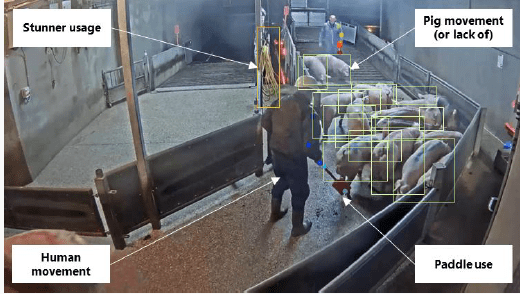

Step 3: the algorithms learned how everything is moving
With that, the program can select situations where there is a higher risk on impairment of animal welfare. Think of:
- the software will select a clip when the stunner is moved
- a clip is selected when a human and an animal are standing still next to each other
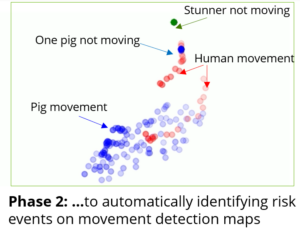

Smart camera’s registration
The selected footage are categorized in a couple of main categories:
- Bottlenecks (a “cork” of animals)
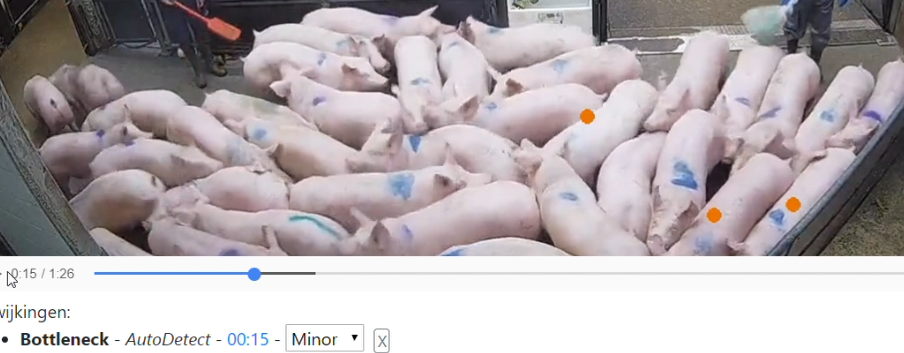

- Stunner use (in the case of an emergency, the animal needs to be stunned directly)
- Human movement (In the case that the flow of the animals is disturbed by human movement)
- Animal behind (In the case that an animal behind the group not following the normal flow, could be a sign of lameness)
With the registration by category it is possible to evaluate in more detail where the improvement points could be. The selected footage is loaded in a personal dashboard. This selected footage is assessed daily by the trained Animal Welfare Officer.
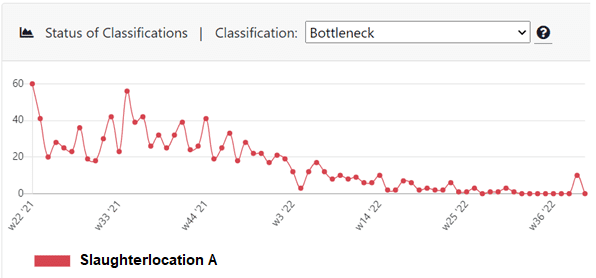

Smart camera’s benchmarking
With the algorithm evaluates in a consistent and objective way, it is possible to benchmark and compare locations. With that benchmarking, blind spots are removed and it is possible to improve in an effective way.
